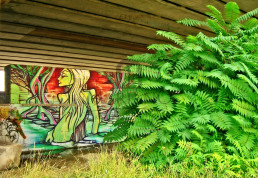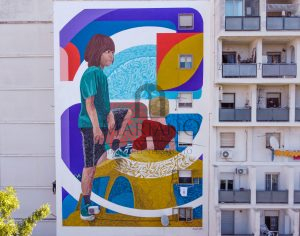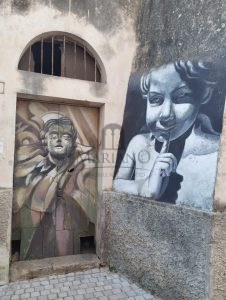Street art and urban regeneration: Salento paints the future
Amid the folds of the Salento landscape, in places often far from the spotlight of conventional tourism, a phenomenon is taking shape—one that blends urban creativity, collective memory, and architectural regeneration: street art. Not only in Lecce, but also in small towns like Presicce, Tricase, Galatina, Parabita, and Nardò, the walls tell new stories, engage with local identity, and reinterpret the forms of the territory using contemporary languages.
Urban Art and Architecture: A Dialogue Woven into Place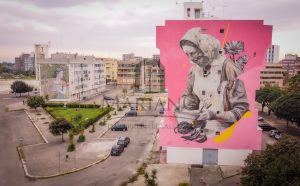
Street art in Salento doesn’t impose itself; it takes root in the existing urban fabric. Wall surfaces—be they façades of old homes, school perimeters, or disused agricultural silos—become canvases for visual narratives that do not erase but transform. This dialogue between painted gesture and architectural material is especially evident in villages where Lecce stone, dry stone walls, and courtyard houses define the collective imagination.
Lecce: The 167 B Street Art Project
One of the most emblematic examples of the bond between public art and urban regeneration is the 167 B Street Art Project in Lecce. Initiated by the cultural association 36° parallelo, the project transformed the peripheral neighborhood of 167 B into an open-air gallery. International artists such as Millo, Zed1, Manu Invisible, and Chekos’art created monumental murals on building façades, tackling themes such as coexistence, environment, and personal growth.
In this context, urban art takes on an almost architectural role: it redefines the perception of space, highlighting areas once considered marginal. It is not mere decoration but a tool of urban transformation.
Galatina, Tricase, Parabita: Small Towns, Big Visions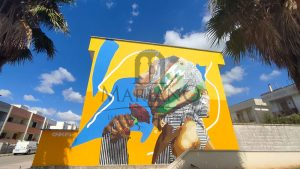
While Lecce may represent the metropolitan face of Salento's street art, the inland and coastal towns offer a diffused laboratory where art, architecture, and local memory intersect in original ways.
In Galatina, several artists have reimagined walls and leftover spaces with works inspired by religious tradition and popular culture. In Tricase, the Libera Compagnia collective activated urban workshops involving citizens, students, and architects in creative regeneration projects—many of them temporary, created during summer festivals, yet powerful in their symbolic impact.
In Parabita, the project RigenerAzioni Visive turned abandoned walls into storytelling spaces. Here, street art becomes civic education and shared design, strengthening the bond between the urban landscape and its community.
Presicce: Art that Respects the Stone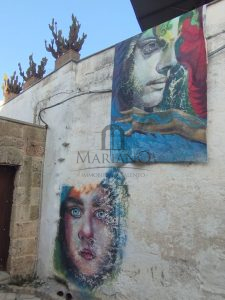
In the village of Presicce, listed among Italy’s Most Beautiful Villages, street art adopts subtle tones that harmonize with the built environment. Murals appear on stone walls, courtyard homes, and narrow alleys, evoking agricultural themes, collective memories, and local symbols. The Presicce Street Art Experience project, partly site-specific and temporary, engaged young Salento-based artists in an effort to match artistic expression with historic architecture.
Artist Marina Mancuso, originally from Presicce and recently returned after years in L’Aquila, has chosen an autonomous path: transforming corners of urban decay into works of art. Wooden or metal doors, old phone booths, and electrical cabinets become her canvases. Her recurring subjects include angels, sacred icons, and rural scenes inspired by cemetery monuments.
“I’ve been working on this project for months, and my goal is to rehabilitate spaces abandoned to neglect.”
For Marina, it’s a true mission.
“I intervene in areas prone to decay or vandalism. I try to cover vulgar words, insults, and graffiti with beauty.”
But she makes a point: “I never touch beautiful antique doors or the natural crusts of the walls. I just wish everything that belongs to the community were cared for like a precious asset, not ruined.”
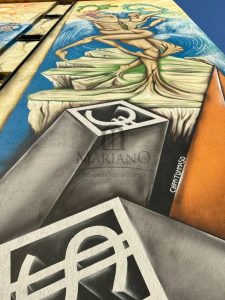 Nardò: The Voice of the Walls
Nardò: The Voice of the Walls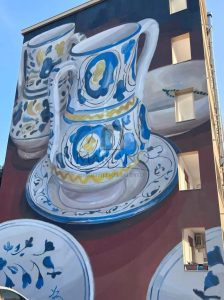
Nardò, one of the most dynamic towns in Salento, also stands out for the vitality of its street art scene, especially in its outer neighborhoods. Here, urban art becomes a chance encounter that surprises and provokes reflection—walls speaking of justice, equality, listening, respect, and dignity.
Among the most meaningful works is Stefano Bergamo’s mural at the Gabelli School: a girl seen from behind, with a dog and a cat, created to raise awareness about stray animals. Near the public housing units, a mural pays tribute to Salvatore Napoli Leone, a local entrepreneur and inventor of the modern ice cream cone wafer.
In the 167 neighborhood, the regeneration project brought high-caliber murals to building façades. The mural Brocche di ceramica (Ceramic Pitchers) by Spanish artist Manolo Mesa recalls Nardò’s historic ceramic tradition, active from the 16th to the 18th centuries.
Nearby, a large flower inspired by the flora of the Porto Selvaggio Natural Park, painted by Puerto Rican artist Natalia Rodriguez (2Bleene), stands out. Tommaso Chiffi, in Rinascita (Rebirth), portrays nature’s revenge over mankind; while Hitnes, a Roman artist, tells the story of the struggle between living and extinct animals, prompting reflection on the historical legacy of the land.
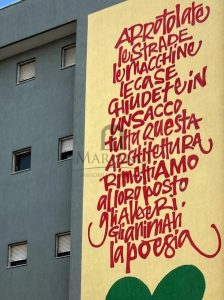 Lastly, Marta Lagna’s mural in the market square features a poem by Franco Arminio:
Lastly, Marta Lagna’s mural in the market square features a poem by Franco Arminio:
“Roll up the streets, the cars, the houses
Stuff all this architecture into a sack
Let’s restore trees, love, and poetry to their place”
An Evolving Heritage
Not all interventions are permanent. Some were created as part of festivals or artist residencies and were designed to last just a season. Yet even these ephemeral experiences contribute to redefining the relationship between community and urban space, offering new narratives and future possibilities.
Street art in Salento is not mere ornamentation. It is a political, social, and architectural act, restoring centrality to the margins, visibility to small towns, and dignity to forgotten places. It is, in every respect, a form of contemporary, widespread architecture, able to speak both to the stones and to the people.
Salento Smart City: When Innovation Comes from the Earth
In the Heart of Southern Salento, a New Model of Territorial Regeneration, a new and innovative model of territorial regeneration is taking root in the heart of southern Salento—one based on co-design and the active participation of local communities. The experience of the Multifunctional Agricultural Park of the Paduli, a 5,500-hectare area stretching from Muro Leccese to Surano, and from San Cassiano to Supersano, stands today as one of Italy’s most emblematic examples of a rural smart city, capable of combining environmental sustainability, community welfare, and a culture of design.
Unlike hyper-connected metropolises, smartness here is embedded in the landscape, in agricultural know-how, in the capacity for networking, and in redefining the relationship between people and the environment. This is not a "smart city" in the digital sense of the term, but rather an intelligent territory—because it is co-designed: conceived, built, and transformed collectively.

Co-designing the Land: An Architectural Act
In this context, architecture transcends its traditional role as construction and becomes a tool of mediation between nature and culture. The regeneration of the Paduli is not only physical or infrastructural, but also social and symbolic. Each project—be it a community garden, a social oven, or a zero-kilometer school canteen—is an architecture of relationship. And as such, it is the result of co-design that centers around residents, real needs, and the memory of place.
The Park itself was not conceived through a top-down process but rather through a long, inclusive journey that began in 2003. Cultural associations such as LUA and Abitare i Paduli worked together with citizens, farmers, architects, educators, and local administrators. This dialogic approach gave rise to a living, changing, and open space, much like resilient cities.
Welfare and Landscape: Two Architectures of Care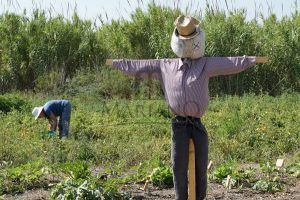
The school canteens, agricultural workshops, and social cooperatives born from the Santi Paduli project (Santa Fucina and Benedetti Paduli) represent models of welfare rooted in the land—and at the same time, they care for the land.
There is a deep kinship between the agricultural act and the architectural gesture: both require attentiveness, intentionality, and the ability to read the context. Both are grounded in an ethic of responsibility. And in both, the community dimension makes the difference.
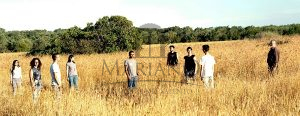
From Built Territory to Lived Territory
The Salento that resists depopulation and mass tourism does not do so through grand projects, but through small daily acts that restore meaning to lived space. Like the production of regenerative organic olive oil, collective wheat cultivation, or harvest festivals that blend work, music, and shared experience. Or the return of young professionals who choose to apply skills acquired elsewhere to imagine a new, inclusive, and creative agriculture.
These practices shape landscape—not only physical but cultural, human, and political. They form a kind of diffused architecture, capable of containing the urgencies of our time (ecology, inclusion, memory) within a territory that becomes a living laboratory.
A Replicable Model?
Santi Paduli is not a recipe, but a process. What makes it valuable beyond Salento is its methodology of co-design, based on:
-
Listening to the territory
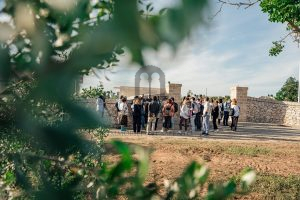
-
Cross-sector alliances between public institutions, the social private sector, and active citizens
-
Valuing both tangible and intangible heritage
-
Participatory design as an ordinary practice
In an age of ecological and social crisis, rethinking the architectures of everyday life—starting from the margins, from small towns, from resilient communities—can offer new visions even for urban centers.
Because, ultimately, the true smart city is one that knows how to care for the future, without forgetting its roots.
Salento engraved: words of stone, voices of yesterday
Through the Landscapes of Salento, among centuries-old olive groves and dry-stone walls, where narrow alleys wind between golden stone houses and carved portals, there exists a discreet and fascinating universe that often escapes the hurried gaze of visitors: the world of domestic epigraphs—phrases engraved into the stone of homes, especially in the historic centers of Salento's villages.
The Voice of Stone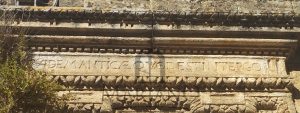
These epigraphs are not mere decorations. They are the living voice of a rural civilization that, even with limited means, did not forgo the desire to leave an eternal trace of its thoughts, its faith, its values. Created by local stonemasons, they were carved into architraves, doorposts, courtyards, and columns, blending seamlessly with the area's typical architecture.
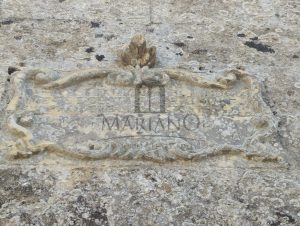
In these villages, every old house is a history lesson: Lecce stone or carparo masonry, star-shaped vaults, monumental fireplaces, Baroque portals—and, indeed, engraved epigraphs that reveal the soul of those who lived there.
A house in Specchia bears the inscription:
"He who works has no time to do evil"
Carved in 1912, it speaks of a work ethic. In Montesardo, on a doorway:
"Peace is a wealth that money cannot buy"
In Giuliano di Lecce, an entire street is rich with epigraphs—each unique, metaphorical, and deeply meaningful: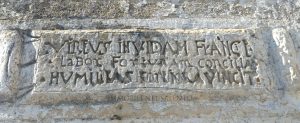
-
"See what is in the bag behind your back"
(A call to recognize our own flaws before judging others) -
"Do not love sleep, lest poverty oppress you. What you save, let it be gain for your heir. In the year of Our Lord 1778"
-
"Virtue destroys envy, work brings good fortune, humility overcomes hardship"
-
"The master built it not in hope of profit, but of freedom, in the year of Our Lord 1789"
(The owner built the oil mill during the year of the French Revolution—not out of greed, but to honor the ideals of liberty) -
"Endure, and save yourselves for better times — Donato Serracca, in the year of Our Lord 1854"
(From Book I of Virgil’s Aeneid, a message of optimism for those in hardship)
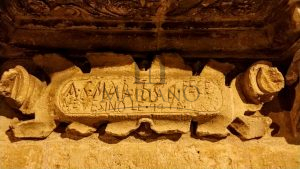 Between the Sacred and the Secular
Between the Sacred and the Secular
These inscriptions also reflect the deep spirituality of this land. Often, one finds invocations in Latin or archaic Italian:
"Ave Maria gratia plena"
"In Deo spes mea"
Short but powerful phrases, placed above the entrance as both blessing and shield.
Salento’s architecture, built from humble yet ingenious materials, is enriched by these sculpted words that protect and tell stories.
Stone as Canvas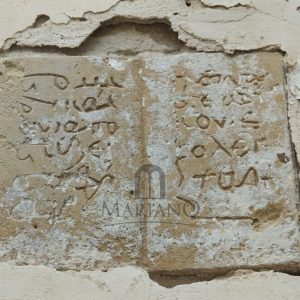
In Salento, stone is not just a construction material—it is a narrative surface, a carved page, a voice that does not age. Epigraphs are born and live within an architecture entirely shaped by the gifts of the land: pietra leccese, carparo, tufo. These pliable, living elements are transformed into architraves, columns, vaults—and also into enduring messages.
Lamia houses with barrel vaults, courtyard homes, underground oil mills, dovecote towers: every structure, no matter how humble, offered space for a phrase, a maxim, an invocation.
Where today a modern home might display an anodized plaque, in the past people wrote on stone with hammer and chisel, etching messages with the same care they used to shape cornices or balcony brackets. Writing became part of the architecture—a unique language in which matter and spirit coexisted. Ornament became meaning. And the house, more than just a refuge, became an existential statement.
Memory and Identity
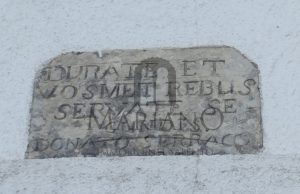
Each epigraph tells more than what the words say—it tells of an era, a mindset, a worldview. It is memory carved into stone, and also a declaration of identity. In a region where architecture has evolved without losing touch with tradition, these inscriptions represent a cultural continuity across generations.
They are never separate from the form that houses them: they follow the contour of a portal, the rhythm of an arch, the height of a window. In doing so, they become a living part of the architectural body, integrated elements rather than additions.
Where a contemporary house may speak through color, materials, or design, a Salento house speaks through its stones. And among those stones, the carved words become a silent yet eloquent signature—not just of an individual, but of an entire community, a social and cultural fabric that continues to speak.
A Voice to Preserve
Time, with its patina, often does not erase these inscriptions. But neglect does. Some have been lost to hasty restorations, others still wait to be rediscovered beneath plaster or vegetation. Thankfully, there is today a renewed interest in this heritage: architects, restorers, thoughtful buyers, and sensitive travelers recognize these engravings as treasures worth preserving.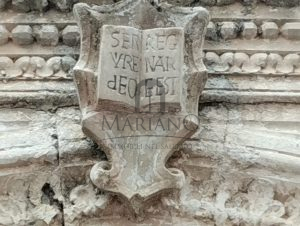
To preserve them, to respect them, or even to draw inspiration from them for new inscriptions is more than an aesthetic choice. It is an act of cultural continuity—a way to honor the soul of a place and carry it into the future without betraying its roots.
To let stone speak again today means to listen closely to the voices of the past—and to add, with care, new words that do not erase the old ones but accompany them, like a dialogue between generations.
Conclusion
In Salento, epigraphs are small miracles of stone and word. They reflect the wisdom of those who lived with little, but with dignity. Reading them is like hearing a gentle voice that reminds us of what truly matters: peace, faith, family, work.
When you walk through the historic centers of Salento, look up—the stones know how to speak. And they speak with Salentine wisdom.
Architectures of passage: doors and symbols of Salento
In Salento, Crossing a Threshold Has Never Been a Neutral Act
In Salento, crossing a threshold has never been a neutral act. The door—whether made of wood, wrought iron, bronze, or glass—has always represented much more than a physical passage: it is a boundary and protection, a display of status and spirituality, an architectural gesture and an anthropological trace. In this corner of Puglia, rich in cultural layers, doors and portals speak an ancient and modern language, made of symbols, noble materials, and artisanal skills still passed down today.
Beyond their symbolic and functional value, portals hold a central importance as architectural elements. They represent the first sign of a building's identity, telling of its style, era, and function. In an architectural context often dominated by stone and austere volumes, the portal introduces an element of movement, detail, and visual dialogue. It connects the exterior and interior, the urban and the private, the ancient and the modern. Especially in historic buildings, the design of the portal is a manifesto: it frames the entrance with arches, moldings, pediments, capitals, and is often topped with coats of arms or inscriptions that tell the story of the family or institution residing there.
The portal is not just an entryway but an architectural device of mediation: it protects, isolates, but at the same time invites, welcomes, and tells a story. Its design, the materials used, and its proportions relative to the façade are carefully studied elements that define the compositional balance of the entire building.
From Medieval Oak to the Cult of Relics
In the Middle Ages, Salento's portals were massive and severe: huge planks of Vallonea oak, sealed with hand-forged nails, peepholes to see without being seen, heavy locks, and iron grates. Rural chapels safeguarded relics and religious symbols behind wooden panels carved with Greek cross motifs, while city walls opened into defensive gates like Porta Alfonsina in Otranto or the Romanesque thresholds of the Abbey of Cerrate. In this context, the threshold held a sacred and apotropaic value: it protected the soul as much as the body.
 Lecce Baroque and the Theatricality of the Threshold
Lecce Baroque and the Theatricality of the Threshold
In the 16th and 17th centuries, wood gave way to Lecce stone and grand entrance scenographies: monumental arches, fluted columns, noble coats of arms. The door, now set within a lavish portal, became a theatrical element. At the height of Lecce's Baroque era, the leaves were adorned with carvings, wrought iron curled into vegetal and animal motifs. Above many of these entrances appeared the raggiera: a semicircular structure in iron or glass, resembling a fan or a sun, which not only let light filter into the atrium but symbolized solar protection, the sacredness of the home, and the cycle of life. In some cases, the raggiere were true works of art, with polychrome glass or motifs inspired by church rose windows.
 Liberty Style and the Domestic Elegance of Interior Vestibules
Liberty Style and the Domestic Elegance of Interior Vestibules
The Liberty style—also known as Art Nouveau—took hold in Salento between 1890 and 1920, parallel to the rise of the agrarian and commercial bourgeoisie. While Lecce stone continued to define external portals, it was in the wooden and glass doors that the taste for modernity was most clearly expressed: large panelled leaves, beveled glass, wrought iron decorations evoking ivy tendrils, irises, and flowing curves. The artisan carpentries of the time—many of which still have active heirs today—contributed to this new aesthetic language.

Interior vestibules (bussole) also emerged: wooden and glass structures that created a second threshold inside the home. Lighter, more elegant, and filled with light, these vestibules served both practical (insulating from cold or dust) and social purposes: they welcomed guests in a discreet and refined way, filtering the view into the interior and playing with light and shadow. The Liberty vestibule is today one of the most sought-after elements in the restoration of historic homes: a design object ante litteram.
Contemporary Bronze: Memory and Sacred Art
From the second half of the 20th century onwards, bronze regained prominence, especially in religious portals. This is the case with the works of Armando Marrocco, who created monumental doors for the Lecce Cathedral and the Sanctuary of Leuca. With its golden patina and sculpted reliefs, bronze tells stories of faith in a contemporary key, continuing a tradition begun with the great medieval doors in copper or brass found in central and northern Italy. Even in Salento, new churches are being equipped with bronze portals featuring symbolic panels, while local foundries and sculptors collaborate with architects to reinterpret the sacred threshold in modern language.
 Living Craftsmanship: Hands that Shape Matter
Living Craftsmanship: Hands that Shape Matter
Behind every historic door lies the patient work of artisans, who still today keep alive an ancient tradition. In Parabita, wood is worked with traditional techniques and modern finishes; in Ruffano, ironwork and doors are crafted that combine Liberty-style aesthetics with modern innovations like Cor-Ten steel. Vestibules are restored or rebuilt using period materials, while some specialized workshops create new raggiere in artistic glass, inspired by early 20th-century models or sacred motifs.
The Threshold as a Symbolic Space
In Salento, the door is not just an architectural object: it is a symbol. A symbol of protection and passage, of welcome and filter, of closure and revelation. This is also reflected in the language: here, the interior entrance door is called a bussola—like a small domestic compass, a tool for orienting oneself between outside and inside. The bussola, the raggiera, the iron knocker shaped like a hand, or bronze panels depicting sacred scenes: all contribute to transforming the door into a narrative of identity—spiritual and tangible—where every detail holds meaning.
Conclusion
Crossing a threshold in Salento is still a deeply meaningful experience: one feels the warmth of aged wood, admires the grace of wrought iron, perceives the golden glow of sculpted bronze. Past and present coexist on those doors that open and close every day, telling a story that never ceases to evolve. It is there, in that small piece of everyday architecture, that the entire Salentine culture of living is concentrated: a wise balance between beauty and function, protection and hospitality.
Puglia Dream: Salento Wins the Blue Flag 2025
Every year, with the arrival of spring, anticipation grows for the announcement of the new Blue Flags—the prestigious international award given to coastal locations that stand out for the quality of their waters, services, and environmental care. The year 2025 has been particularly positive for Puglia, which confirms and strengthens its presence on the national scene, with several Salento locations in the spotlight.
But what exactly is the Blue Flag? What’s its history? And why is it so important—not only for sea lovers, but also for local communities and the regional economy?
The Origins of the Blue Flag
The Blue Flag was established in 1987 by the FEE (Foundation for Environmental Education), an independent international organization based in Denmark. Its goal—then and now—is to promote environmental sustainability in coastal municipalities by encouraging administrations to improve land management, water cleanliness, and the quality of services offered to residents and tourists.
Over the years, the award has gained increasing importance, becoming an international benchmark for those seeking environmentally responsible seaside destinations. Today, the Blue Flag is awarded in over 50 countries worldwide and represents a symbol of reliability, safety, and respect for nature.
Criteria for Earning a Blue Flag
Earning this recognition is no easy feat. Locations must meet numerous requirements that go far beyond scenic beauty or crystal-clear waters. Key criteria include:
-
Excellent bathing water quality, verified by constant and rigorous monitoring.
-
Sustainable land management, with a focus on recycling, wastewater treatment, and protection of local ecosystems.
-
Accessibility and safety, with equipped beaches, lifeguards, and facilities accessible to people with disabilities.
-
Environmental education, promoted through activities, information boards, and awareness campaigns for both residents and visitors.
Participation in the program is voluntary, but the selection process is strict: every application is thoroughly reviewed, and only those that meet all requirements are allowed to hoist the coveted flag.
Puglia Among the Sea Queens of 2025
With its long coastline bathed by both the Adriatic and Ionian Seas, Puglia has long been one of Italy’s most awarded regions by the FEE. In 2025 as well, the region not only confirmed but increased the number of Blue Flag destinations, placing it among the top regions in Italy for certified beaches.
Twenty-two Puglian municipalities were awarded the distinction, covering the entire coastal area from north to south—a testament to a widespread commitment to environmental protection and quality tourism.
Salento in the Spotlight: All the Awarded Locations
Within this virtuous context, Salento plays a leading role. A land of olive trees, stone, and crystal-clear waters, Italy’s “heel” received multiple awards recognizing not only the beauty of its landscapes but also the increasing environmental awareness of local governments.
Among the Salento towns awarded the 2025 Blue Flag are:
-
 Otranto, with its iconic beaches and constant efforts to enhance the coastline.
Otranto, with its iconic beaches and constant efforts to enhance the coastline.
-
Melendugno, which retained the flag thanks to its seaside areas of Torre dell’Orso, Roca, and San Foca.
-
Salve, whose “Maldives of Salento” have long been a model for balanced tourism management.

-
Gallipoli, which, despite being a mass tourism hotspot, has managed to protect parts of its coastline.
-
Nardò, with its seaside areas of Santa Caterina and Santa Maria al Bagno, confirmed for their quality and services.
-
Santa Maria di Leuca, a 2025 new entry, receiving the Blue Flag for the first time—marking the results of recent work on environmental care, accessibility, and sustainable coastal use.
-
Tricase, also a first-time recipient, rewarded for its efforts in redeveloping its wilder, more authentic coastal spots like Marina Serra.
Beyond Tourism: The Blue Flag’s Impact on the Territory
 The Blue Flag is more than just a symbolic honor—it brings real, often significant, benefits. For tourists, it’s a guarantee of quality and an added reason to choose a destination. But its impact reaches further.
The Blue Flag is more than just a symbolic honor—it brings real, often significant, benefits. For tourists, it’s a guarantee of quality and an added reason to choose a destination. But its impact reaches further.
Over time, the award has shown a direct effect on the real estate market: certified areas tend to experience increased demand—from both vacation home seekers and forward-looking investors. A well-maintained, clean, and valued territory naturally attracts both Italian and foreign capital.
Additionally, the Blue Flag encourages eco-conscious practices among tourism businesses, leading to greater adoption of renewable energy, plastic reduction, and landscape preservation initiatives.
A Commitment Looking Toward the Future
The success of 2025 confirms that the path taken by Puglia and Salento is the right one. The Blue Flag is not a finish line, but an ongoing commitment—a challenge renewed each year that requires collaboration, vision, and respect for a unique land.
Looking ahead, it will be essential to continue this journey by involving citizens, local governments, tourism operators, and investors in a shared vision of sustainable development. Because a cleaner sea, a more accessible coastline, and more mindful management are not just environmental goals—they are the beating heart of a new economy: fairer, healthier, and more beautiful to live in.
Salento protagonist of regenerative tourism: Travel Hashtag 2025 lands in Martano
On May 13 and 14, 2025, the heart of Salento will host an international event of great significance: the first Italian edition of Travel Hashtag, the traveling format that for the past six years has made stops in some of the world’s most iconic destinations to explore new tourism trends.
 This twentieth edition will take place in the stunning setting of an exclusive resort in Martano—an authentic masseria (traditional farmhouse) nestled in nature, a symbol of discreet luxury and deep respect for the land. The location was chosen deliberately to focus on rural, regenerative, and sustainable tourism, with notable guests from both Italy and abroad. The event is held in media partnership with DOVE and under the patronage of ENIT, Pugliapromozione, the Province of Lecce, the Municipality of Martano, and the Italian Ministry of Tourism.
This twentieth edition will take place in the stunning setting of an exclusive resort in Martano—an authentic masseria (traditional farmhouse) nestled in nature, a symbol of discreet luxury and deep respect for the land. The location was chosen deliberately to focus on rural, regenerative, and sustainable tourism, with notable guests from both Italy and abroad. The event is held in media partnership with DOVE and under the patronage of ENIT, Pugliapromozione, the Province of Lecce, the Municipality of Martano, and the Italian Ministry of Tourism.
Rural Tourism and Real Estate: New Opportunities for Salento
The event aims to showcase Salento as a model of regenerative tourism—one that enhances the identity of places and creates well-being for both travelers and local communities. This approach has direct benefits for the real estate sector, as demand increases for masserie, rural homes, historic dwellings, and countryside properties renovated with authenticity and sustainability in mind.
 More and more investors, both Italian and international, are looking for properties in Salento to turn into experiential tourism residences, charming agritourism spots, boutique hotels, or prestigious private homes. This trend aligns perfectly with the Travel Hashtag philosophy: authentic, land-connected experiences, far from mass tourism.
More and more investors, both Italian and international, are looking for properties in Salento to turn into experiential tourism residences, charming agritourism spots, boutique hotels, or prestigious private homes. This trend aligns perfectly with the Travel Hashtag philosophy: authentic, land-connected experiences, far from mass tourism.
An Event Focused on the Future of Tourism (and Living)
The two-day program will include themed conferences, talks, networking sessions, and testimonials from those who have already made Salento a premier destination.
Among the expected guests: prominent institutional figures, representatives from travel media, business executives, university professors, tourism marketing experts, hospitality consultants, destination managers specializing in inland areas, and professionals in wellness, digital detox, and territorial development.
Key topics:
-
“Return to the Essentials” – regenerating places and people
-
“Respect the Land, Cultivate the Future” – agriculture and tourism as allies
-
“Disconnection Tourism” – reconnecting with yourself in nature’s silence
-
“Rural Tourism: Valuable and Authentic Experiences” – a winning model for Salento
-
“Puglia: Territory, Opportunity, Attractiveness” – perspectives on local development
-
“Regenerative Tourism for a New Social Wellbeing” – the role of quality hospitality
 Why This Event Also Matters to Homebuyers and Investors
Why This Event Also Matters to Homebuyers and Investors
Travel Hashtag 2025 shines a light on a new way of living, inhabiting, and investing in Salento. It's not just about traveling—but about building meaningful connections with the land, choosing properties that tell a story, that respect the environment, and that offer authentic experiences.Whether you're looking for a second home surrounded by greenery, dreaming of opening a charming hospitality business, or simply wanting to live closer to nature—Salento today is fertile ground, in every sense of the word.
The growing attention to regenerative tourism and rural area promotion is making this region increasingly attractive from a real estate investment perspective as well. A home here is not merely a material asset—it’s a cultural, social, and human value.
Conclusion
Travel Hashtag 2025 is a key moment to reflect on the future of tourism—and of living—in Italy. And it does so by choosing Salento: a land of tradition and innovation, of authentic beauty and genuine hospitality. A territory that once again proves to be at the center of the map for those looking ahead.To explore our real estate offerings in the heart of Salento, contact us: whether you want to live here, invest, or simply slow down, we can help you find the perfect place to call home.
The spontaneous treasures of Salento: plants and flowers between tradition, ancient uses and forgotten flavours
The Salento landscape, especially in its countryside and along the dry-stone walls, safeguards a rich botanical heritage of wild plants and flowers that have been part of local community life for centuries. Some are still used today in cooking, folk medicine, liqueur production, as textile fibers, or to dye fabrics. Let’s explore some of the most significant wild plants of the Salento area and their traditional uses, often passed down from generation to generation.
The Salento, particularly the province of Lecce, boasts one of the highest levels of plant biodiversity in Italy. The region is rich in typical Mediterranean scrub species, including olive trees, holm oaks, myrtle, and many other shrubs and trees. This plant diversity is a crucial value for the local ecosystem and contributes to the beauty and richness of the Salento landscape.
Medicinal Plants: The Green Pharmacy of the Past
 Mallow (Malva sylvestris)
Mallow (Malva sylvestris)
With its soft leaves and lilac-colored flowers, mallow is one of the most versatile plants. In Salento, it’s mainly harvested in spring. It was traditionally used for emollient compresses and soothing teas for coughs and intestinal issues.
compresses and soothing teas for coughs and intestinal issues.
Where to find it: In uncultivated fields around Serrano and Carpignano Salentino, and along rural paths through olive groves.
Wild Fennel (Foeniculum vulgare)
It grows freely in fields and along roadsides. Its seeds and leaves have long been used as digestive aids.
Where to find it: Common along dirt roads near Specchia, in the countryside around Giuggianello, and along the paths of the Idro Valley near Otranto.

Calendula (Calendula officinalis)
Recognizable by its fragrant, bright orange petals, calendula is a favorite among herbalists and country women. Used in skin ointments against irritations, burns, and insect bites, it was also added to anti-inflammatory teas.
Where to find it: In sunlit fields, roadsides, and gardens near Spongano, Cannole, and the countryside around Neviano.
Curiosity: Some women in Salento prepared “calendula oil” by steeping fresh flowers in olive oil under the sun for nine days—a homemade remedy for babies, burns, and chapped skin.
Edible Plants: A Humble Cuisine Rich in Flavor
Wild Chicory (Cichorium intybus)
The undisputed queen of Salento’s humble cuisine. It’s boiled and then sautéed or served with fave nette (mashed fava beans).
Where to find it: In rotating or abandoned farmlands, especially between Corigliano d’Otranto and Galugnano.
Wild Asparagus (Asparagus acutifolius)
They sprout in March among thorny bushes. Ideal for omelets and risottos.
Where to search: In the woods of Montesardo and the Costa Otranto-Santa Maria di Leuca Natural Park.

Kritimi (Crithmum maritimum) – Sea Fennel
This succulent plant with a sea-salt scent grows between sun-drenched rocks along the Salento cliffs. Its fleshy leaves are harvested in summer and preserved in vinegar or oil.
Where to find it: Along rocky coastlines between Porto Badisco, Castro, Torre Vado, and San Gregorio.
Anecdote: In some families of the Capo di Leuca, kritimi were part of the Christmas preserves; fishermen used them at sea to prevent scurvy.
Caper (Capparis spinosa): A Treasure Hidden in the Walls
With its showy flowers and rounded leaves, the caper grows stubbornly among dry-stone walls, in the cracks of old buildings, and on sun-exposed rocks. Its buds (the true capers) and fruits (called cucunci) are harvested in spring and summer and preserved in salt or vinegar. Their intense flavor makes them precious in Mediterranean cuisine—perfect in salads, on bruschetta, or in sauces for fish and pizzaiola-style meat.
Where to find it: Abundant among the stone walls of Minervino di Lecce, in the stone houses of Giurdignano, around the Vaste archaeological site, and on the cliffs between Santa Cesarea Terme and Castro.
Curiosity: In many Salento farming families, caper picking at dawn was entrusted to the youngest, as it required delicate handling before the buds opened. The hands would be sticky with resin, but the fragrance released in the kitchen when salting them marked the arrival of summer.
Plants for Liqueurs: Aromas of the Territory
 Myrtle (Myrtus communis)
Myrtle (Myrtus communis)
A classic of the Mediterranean scrub, its fragrant berries are used to make homemade liqueurs.
Where to find it: In the scrub between Santa Cesarea Terme and Porto Selvaggio, and near Torre dell’Orso.
Rue (Ruta graveolens)
A strongly aromatic plant, once added—sparingly—to grappa and digestifs.
Where it grows: In rustic gardens and orchards between Cutrofiano and Soleto.
Fiber Plants: Nature’s Hidden Threads
Spanish Broom (Spartium junceum)
Its stems were used to produce a tough fiber for ropes and fabrics.
Where to find it: In the arid areas between Tricase and Maglie, and along old rural railway lines.
Dye Plants: The Colors of the Earth
 Dyer’s Rocket (Reseda luteola)
Dyer’s Rocket (Reseda luteola)
Traditionally used to dye textiles a bright yellow.
Where it grows: In the limestone areas between Alessano and Tiggiano, and near the stone quarries of Melpignano.
Poppy (Papaver rhoeas)
Its petals were used both for dyes and calming herbal teas.
Where it thrives: In the wheat fields between Scorrano and Taviano—especially stunning between April and May.
A Heritage Worth Preserving
Today, many of these plants are at risk of being forgotten, crowded out by modern consumer habits and a landscape increasingly transformed by human activity. Yet, in Salento, there’s growing interest in reviving the land’s ancient traditions: synergistic gardens, botanical excursions, herbal remedy workshops, and rural gastronomy experiences are on the rise.
Recommended experiences:
-
La Cutura Botanical Garden in Giuggianello, to explore native flora.
-
The Via dei Pellegrini trail, from Tricase to Santa Maria di Leuca, with ethnobotany experts.
-
The farmers’ markets of Melpignano, Calimera, and Corsano, where one can find preserves and products made from wild herbs.
Want to Rediscover the Authentic Salento?
Walking through spring fields, breathing in the scent of wild fennel, harvesting kritimi along the rocks, or spotting sea lilies on the dunes—these are all ways to connect with the slow, deep rhythm of this land.
Notes of freedom and flavors of spring in Salento
Salento, with its enchanting natural beauty, ancient knowledge, and deep sense of community, provides the perfect setting to celebrate two key dates in the Italian calendar: April 25, Liberation Day, and May 1, Labor Day. These holidays, which blend historical memory with civic commitment, become an opportunity to explore the territory with fresh eyes—through cultural events, folk festivals, and moments of pure relaxation in nature.

April 25: Shared Memory and Spring Renewal
April 25 commemorates Italy’s liberation from Nazi-fascism in 1945. Across Salento, institutional ceremonies and initiatives organized by schools, cultural associations, and local governments take place. In Lecce, the baroque heart of the region, the traditional commemorative parade is held in Piazza Partigiani, involving students and musical groups, while photo exhibitions and staged readings honor Salento’s heroes of the Resistance.
The commemorations are also deeply felt in small towns like Maglie, Tricase, Galatina, and Nardò, where local history merges with family stories and memory comes to life in the streets of the historic centers.
Traditions That Unite: April 25 Events and Folklore
Springtime in Salento also means celebration. In Pescoluse, along the southern coast, the Kite Day (Giornata dell’Aquilone) returns: a 25-year-old event celebrating freedom with colorful kites, children’s games, tastings of traditional foods, and street performances. It’s an atmosphere of joy and participation for the whole family.

In the countryside between Lecce and Squinzano, the Abbey of Santa Maria di Cerrate hosts Lu Panieri Fair, an event recreating ancient Salento crafts with artisan workshops, food stands, and traditional shows. It’s the perfect chance to savor authentic local flavors: pittule, pezzetti di cavallo, frise with tomatoes and new olive oil, all accompanied by live pizzica folk music.
In Castro, along the stunning Adriatic coast, the Feast of the Madonna dell’Annunziata takes place—an event that blends spirituality and spectacle: a sea procession, boat blessings, fireworks over the harbor, and a local festival with fresh seafood dishes draw hundreds of visitors each year.
A Nature Break: Between Relaxation and Discovery
The long April weekend is also ideal for a relaxing getaway in nature. Salento’s natural parks—like Le Cesine (WWF reserve), the Park of Rauccio, and the Alimini Lakes Oasis—offer walking, biking, or horseback riding trails among centuries-old olive trees, coastal dunes, and lake landscapes. Local agencies organize guided excursions that combine nature and culture, such as tours of Zinzulusa Cave or Deer Cave (Grotta dei Cervi) in Porto Badisco.
Families won’t want to miss a stop at La Rusciulara, near Lecce: an educational farm where children can ride ponies, meet farm animals, and take part in bread and pasta-making workshops.
 May 1: Music, Meaning, and Ancient Traditions
May 1: Music, Meaning, and Ancient Traditions
Labor Day in Salento is a time for community and celebration. In Tricase, the traditional May 1 Festival is held—an all-day musical marathon featuring local and national artists, creative workshops, craft markets, and food trucks bringing life to the town’s main park.
In Diso, the day is marked by spiritual devotion, with a heartfelt patronal feast and a procession accompanied by lights and band concerts. In Gallipoli, the seafront hosts sports events, vintage car rallies, and food stands celebrating the area’s maritime cuisine.
Especially captivating is the Festa de lu Màscìu in Sannicola, an ancient celebration of love and spring. Young people in period costumes parade through the streets on decorated carts, singing serenades and offering fruits and flowers—symbols of fertility and renewal. The procession ends at the San Mauro Hill, where the day continues with picnics, singing, and dancing until sunset.
Taste, Art, and Beauty: Experience Salento
During these festive days, many local accommodations offer experiential packages that combine lodging, gastronomy, and guided tours. From Salento cooking classes to wine tours in Negroamaro and Primitivo cellars, the region welcomes visitors with sincere hospitality.
Don’t miss a visit to the historic centers of Lecce, Otranto, Specchia, and Galatina, where baroque churches, historic palaces, and artisan workshops reveal the true soul of the land. Or, for those looking to catch the first sun of the season, the beaches of Torre dell’Orso, Porto Cesareo, and Punta Prosciutto offer fine sand and crystal-clear waters—perfect for a taste of summer.
Conclusion: Two Holidays, a Thousand Ways to Celebrate
Whether you’re seeking a rejuvenating break, cultural experiences, or authentic flavors, April 25 and May 1 in Salento offer countless opportunities for every kind of traveler. Here, between remembrance and celebration, the meeting of tradition and the future is renewed each year—under the sun of a land that never ceases to amaze.
Easter in Salento: traditions, rites and landscape wonders
Experiencing Easter holidays in Salento can become an unforgettable journey, where history, folklore, and flavour intertwine in an atmosphere that is both authentic and deeply rooted in the land. Here, Easter traditions are not just memories of the past but remain an integral part of everyday life, especially in the small villages.
From traditional folk songs sung in the streets to the preparation of typical sweets, Easter in Salento is a true voyage through symbols, colours, and gestures passed down from generation to generation. Here are some of the most original and evocative customs you can discover while visiting Italy’s heel.

Palm Sunday Serenade: “Tu Lazzarenu”
Easter celebrations begin as early as Palm Sunday. In addition to the traditional blessing of olive branches, a very special tradition is still alive in some towns like Alezio: the serenade known as Tu Lazzarenu. On the eve of Palm Sunday, groups of singers walk through the village streets performing songs that recall the last days of Jesus’ life, receiving fresh eggs in return from the residents. It's a moment of community and hospitality, steeped in popular music.
The “Sabburchi”: White Wheat Sepulchres
During Holy Week, Salento's churches prepare for the creation of the Sabburchi, small artistic installations made from wheat sprouted in darkness—symbols of life born in silence and waiting. These displays are arranged on richly decorated altars with candles, purple fabrics, Easter symbols, and white flowers. On Holy Thursday and Good Friday, it's customary to visit the sepulchres in each church, each one with its own unique style and meaning.

The “Quaremma”: Time of Waiting
Hanging above the streets of many Salentinian towns is the Quaremma, a symbolic figure: a cloth puppet of an old woman dressed in black, with an orange pierced by seven feathers. Each Sunday before Easter, one feather is removed, marking the passage of time. At the end of the period, the Quaremma is burned in a collective ritual that symbolises the end of waiting and the beginning of a new season. This ancient gesture brings communities together in a shared moment of renewal.

Traditional Sweets: Cuddhura, Almond Lambs and Fish
Easter in Salento also means traditional sweets. The most iconic is undoubtedly the Cuddhura—a sweet bread ring decorated with hard-boiled eggs (still in their shells) and often shaped into whimsical forms such as hearts, baskets, dolls (pupa), or cockerels (caddhuzzi). Once a gift made by girls for their suitors, today it is a festive treat enjoyed by families.
Another must-have on Salentinian tables is the traditional almond paste lamb—an elegant and symbolic dessert shaped by hand into a lamb or fish. This delicacy has ancient origins and is still made today by artisanal bakeries and, in some cases, local monasteries. Known as “tuce te li signori”—“sweets for the noble”—it once stood out for its refinement and high cost.
 “Lu Riu”: Lecce’s Second Easter Monday
“Lu Riu”: Lecce’s Second Easter Monday
In Salento, the celebration doesn’t end on Easter Monday. In Lecce and surrounding areas, the following Tuesday is celebrated with Lu Riu, a day dedicated to outdoor gatherings. Once tied to a rural pilgrimage, today it’s an opportunity to enjoy nature with picnics, music, and shared meals. Favourite spots? The beaches, public parks, and Lecce’s historic centre—full of friends and families enjoying the springtime air.
The Ritual of the Pierced Stone in Calimera: Nature Meets Symbolism
In Calimera, the day after Easter revives one of the region’s most fascinating rituals: passing through a pierced stone kept at the rural church of San Vito. This ancient tradition, tied to themes of fertility and rebirth, has roots in pre-Christian cults and has been preserved through the centuries. Even today, adults and children line up to pass through the small hole in the rock, as a gesture of good fortune and renewal.
Experiences to Enjoy During Easter in Salento
Beyond the rituals and traditions, Salento offers a wide range of experiences that make an Easter stay truly special:
-
Visits to historic villages such as Otranto, Specchia, Galatina, Presicce, and Corigliano d'Otranto.
-
Walks among centuries-old olive trees and countryside masserie.
-
Coastal hikes from Santa Maria di Leuca to the “Maldives of Salento” and the Porto Selvaggio nature reserve.
Why Choose Salento at Easter?
Salento is a land that welcomes and amazes, especially during times when its local traditions come alive with intensity. Easter is one of those special moments—a chance to rediscover the beauty of authenticity, shared time, and the deep bond between people, nature, and place.
Whether you're looking to relax between beaches and blooming countryside, experience ancient rituals, or simply enjoy the local cuisine, Salento will offer you all this... and much more.
Salento Design: Fico d’India Suggestions for Designer Interiors
In Salento, a land of intense light, dry-stone walls, and crystal-clear sea, every element of nature tells a story. Among these, the prickly pear cactus stands out as one of the most iconic protagonists: a rustic, resilient, and fascinating plant that has evolved from a spontaneous presence into a true symbol of the landscape and local aesthetic. Today, its essence extends far beyond the fields and roadsides, making a strong entrance into the worlds of architecture, design, and home decor.

Architecture and Landscape: A Natural Union
In Salento, architecture has always engaged in a dialogue with the landscape. The region’s masserie, trulli, tuff-stone houses, and white villas find an aesthetic and functional ally in the prickly pear cactus. Its shapes are often used to define boundaries, create natural backdrops, and mark spaces without disrupting the visual harmony of the surrounding environment.
In contemporary bioarchitecture and restoration projects, the cactus paddles inspire shapes, textures, and materials. Some local architects incorporate it into xerophytic gardens, courtyards, and green rooftops as an identity-rich and sustainable element.
Design and Decoration: The Charm of Reimagined Nature

The unique aesthetics of the prickly pear — with its soft curves, vivid colors, and unmistakable texture — have made it a favored subject in contemporary Salento design. Its forms are translated into:
-
Hand-glazed artistic ceramics depicting the paddles or fruits
-
Botanical prints on textiles for cushions, tablecloths, and curtains
-
Minimalist design objects such as mirrors, sconces, or sculptures inspired by the plant’s silhouette
-
Mediterranean-style wallpapers and mural paintings
The prickly pear thus becomes a visual icon of a territorial identity that combines aesthetics, craftsmanship, and memory.
Prickly Pear Furniture: Sustainable and Creative Craftsmanship
 In recent years, Salento designers and artisans have begun creating furniture using dried and treated prickly pear paddles, transforming them into true sustainable artworks.
In recent years, Salento designers and artisans have begun creating furniture using dried and treated prickly pear paddles, transforming them into true sustainable artworks.
This process blends ecological innovation with artisanal tradition and involves several phases:
-
Harvesting mature paddles selected for their shape and size
-
Slow drying in the sun or ventilated spaces over several weeks to remove moisture and the fibrous inner part
-
Antibacterial treatment and hardening using natural resins or non-toxic impregnating agents to preserve structure over time
-
Cutting, shaping, and assembly, often in combination with other local materials such as olive wood, wrought iron, or glass
-
Artistic finishing, which may include clear coatings, natural pigments, or decorative techniques like carving and inlay
The results are stunning: seats, decorative panels, bed headboards, consoles, and tables in which the prickly pear takes center stage, offering unique texture and strong visual impact. Each piece is one of a kind, with imperfections that enhance its authenticity.
Prickly Pear Textiles: Sustainable Design and Innovation
The use of prickly pear in Salento textiles takes two main forms:
-
Decorative motifs inspired by the plant
Widely used in home textiles like curtains, tablecloths, cushions, and bedspreads, patterns featuring cacti, leaves, and fruits evoke the Mediterranean landscape. These prints are often handmade using traditional techniques such as screen printing or block printing and reflect the earthy tones of Salento: greens, ochres, corals, and ivory. -
Textile fiber derived from the prickly pear
In line with sustainability principles, some experimental workshops in Puglia are developing natural fabrics made from the plant’s inner fibers. Once dried and processed, the paddles yield a resistant and lightweight plant fiber that can be blended with linen or organic cotton to create eco-friendly textiles with a rustic yet elegant feel.
 These innovative materials are used in upholstery, fashion, and decorative items, paving the way for circular design and bio-creativity.
These innovative materials are used in upholstery, fashion, and decorative items, paving the way for circular design and bio-creativity.
These elements fit beautifully in both rustic and modern interiors, serving as a bridge between tradition and contemporaneity.
Cultural and Aesthetic Symbol
The prickly pear is more than a plant: it is a cultural symbol of the South — a powerful image of resilience, adaptability, and rugged beauty. Bringing it into architectural and domestic spaces means embracing the region’s character, celebrating its strength and history, and living its aesthetic every day.
In Salento, decorating with the prickly pear is a declaration of love for the land, for light, and for the elegant simplicity of nature.




